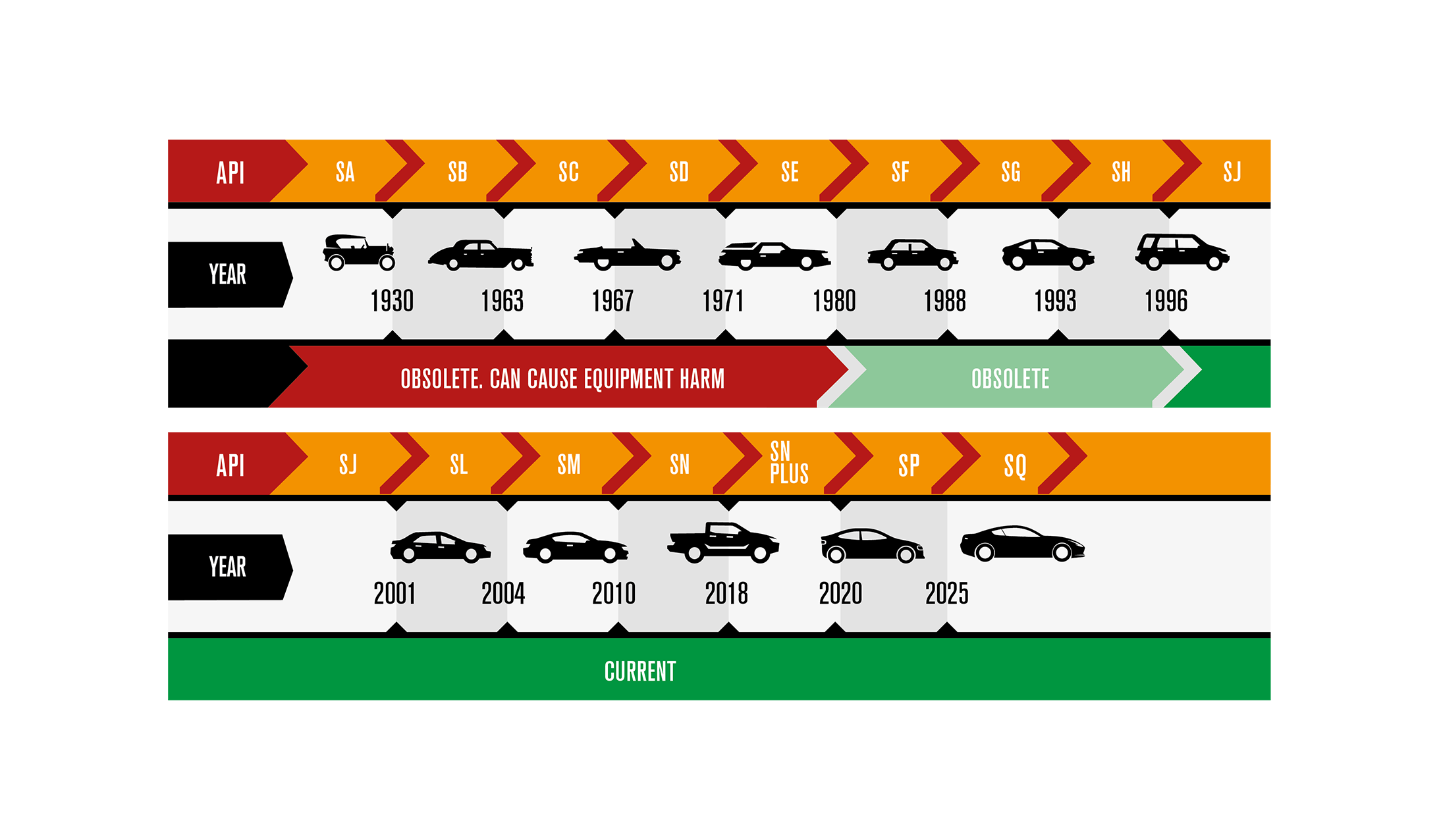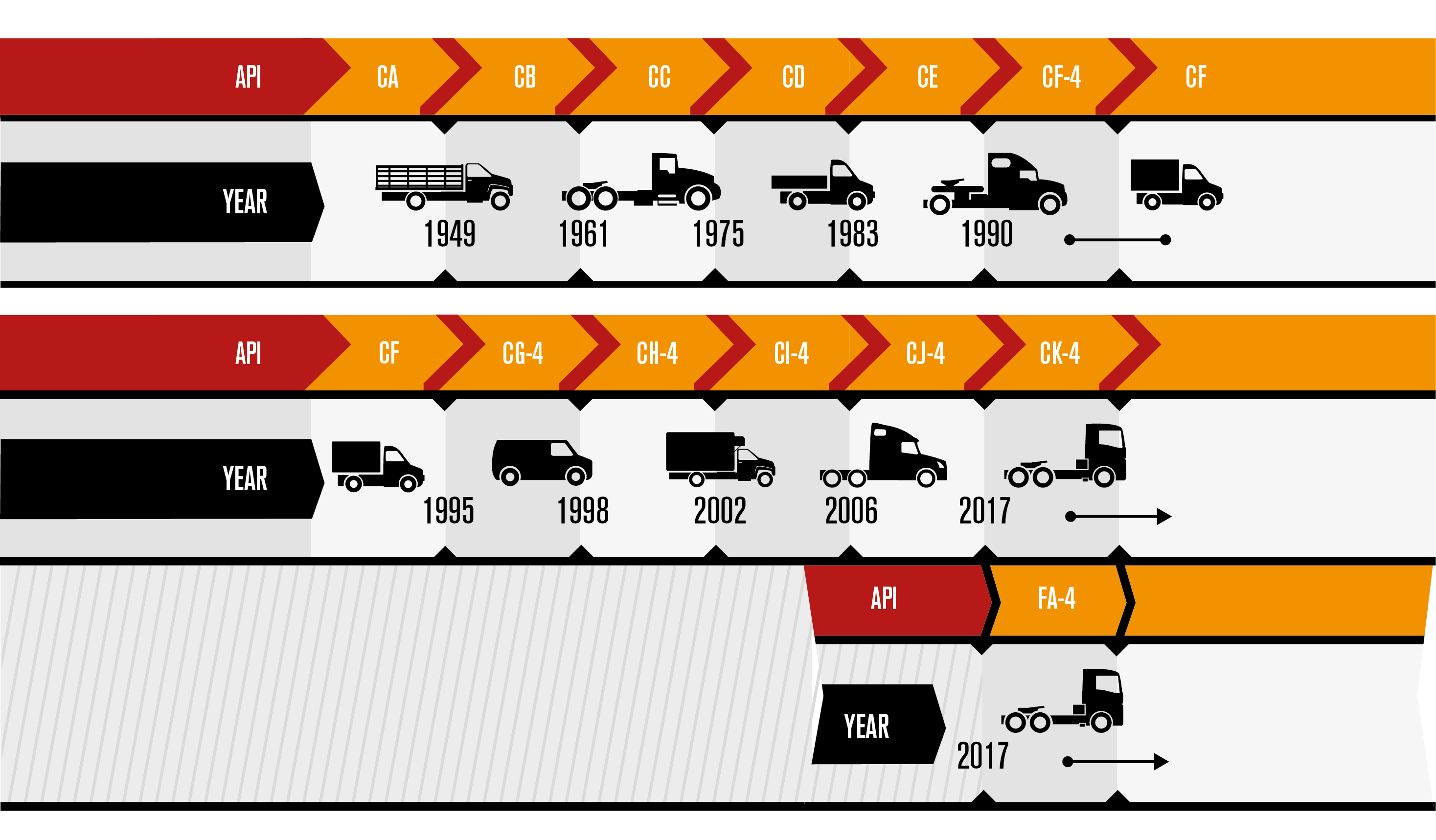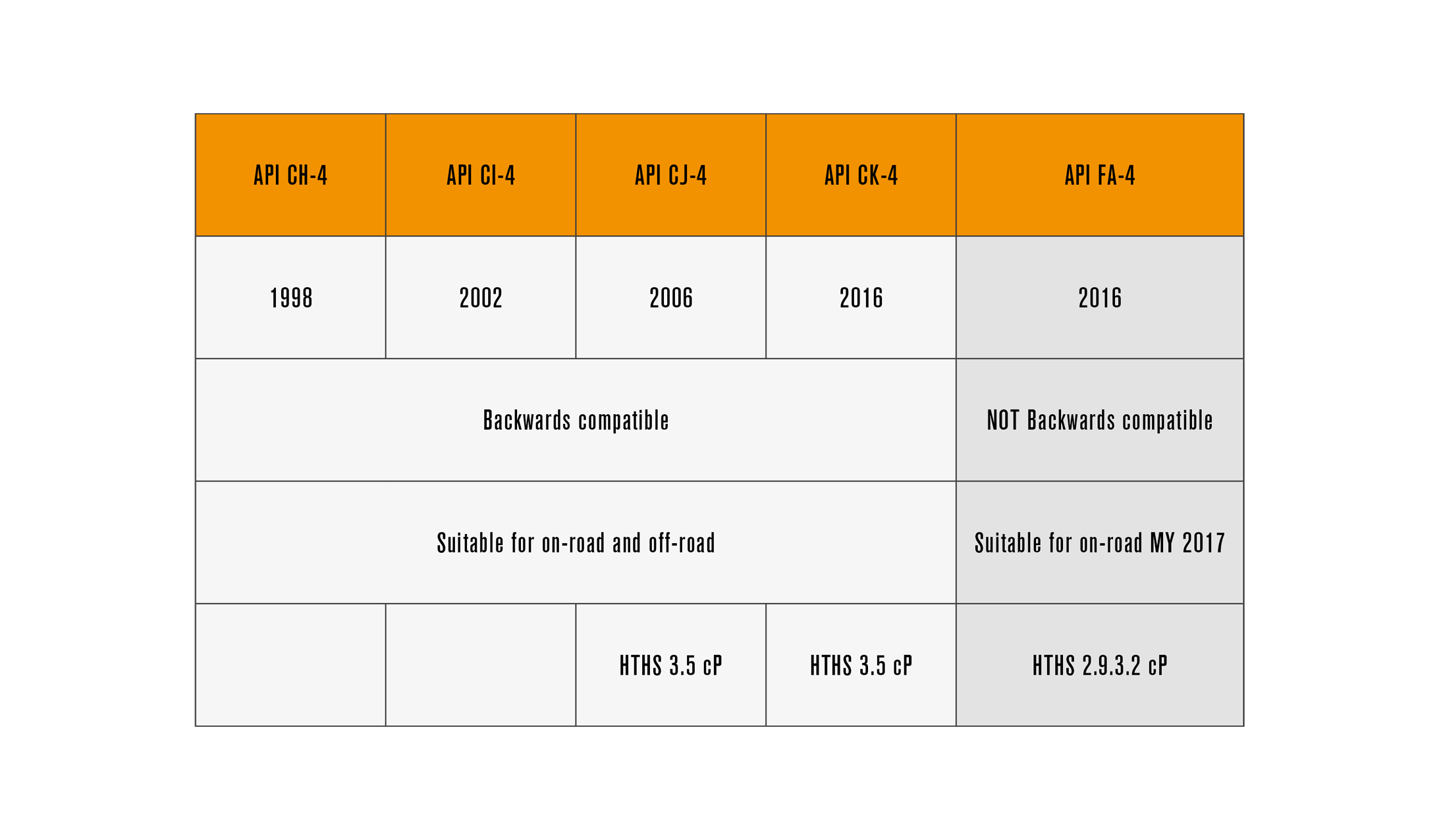
The American Petroleum Institute (API) is the authority when it comes to setting standards for motor oils used in petrol and diesel engines. Petrol (gasoline) engines are classified under Category S, indicating "Spark Ignition", while diesel engines fall under Category C, indicating "Compression Ignition". Each category is followed by a letter, reflecting the oil's technological advancements.
For petrol (gasoline) engines, API specifications range from SA to SH, with higher letters representing newer technologies. Oils with specifications from SA to SH are typically suitable for engines manufactured before 1995. However, it's important to note that higher specification oils can be used in place of lower ones. For example, an oil with specification SQ can be used for engines requiring API SP, SN, SM, SL, and SJ.
On the left are all the API categories for Petrol, primarily for passenger cars, as the majority of vehicles in the US run on Petrol (also known as Gasoline) rather than Diesel.
When selecting the right oil for your vehicle, consider its year of manufacture. Modern oils may not be compatible with older engine designs. Specifications from SA to SH are outdated and meant for engines made in 1995 and earlier. As explained earlier, newer specifications have higher letters and replace older ones. API SQ to SJ are for newer cars, while API SH to SA are for older ones.
For instance, If you own a car from 1987 requiring an API SF oil and only have oils with API SH and SL available, the oil with SH level would be most suitable. Alternatively, a car from 2003 requiring API SL can safely use oils with specifications SJ, SM, SN, or SQ.

It's always advisable to adhere to API recommendations for optimal engine performance and longevity. If you want to have more details about API and their lubricant program, check there website.
Diesel Engine Service Classifications
In December 2017, API introduced new heavy-duty Diesel specifications, ten years after the issuance of API CJ-4.
The primary motivations behind updating the specifications were twofold: enhancing fuel economy while ensuring engine durability under higher temperatures. The push for improved fuel economy stems from end-users aiming to reduce operating costs and comply with increasingly strict greenhouse gas (GHG) emissions regulations. In 2011, the Environmental Protection Agency (EPA), alongside other American agencies, established the Heavy Duty National Program to implement rules aimed at reducing Greenhouse Gas emissions and fuel consumption. To address these changing needs, engineers looked into new engine designs that use thinner lubricants (lower viscosity) to improve fuel efficiency. In response to this, the Engine Manufacturer Association (EMA) formally requested API to introduce a new commercial engine oil category. Initially referred to as Proposed Category 11, it eventually became known as PC-11.
The PC-11 specification shows a change from the previous ease of API compatibility. Typically, new specifications are backward compatible with older ones. For instance, if a vehicle requires CH-4 and only lubricant with API CJ-4 is available, it can be used. The PC-11 specifications are divided into two categories:
11-a: API CK-4, serving as a direct replacement for CJ-4.
11-b: A completely new category known as FA-4.

Both categories offer stronger durability and better fuel efficiency compared to CJ-4.
CK-4 is designed to be a tougher version of CJ-4, available in viscosity grades like 15W-40, 10W-30, and 5W-40, with a high HTHS (High-Temperature High Shear) rating. CK-4 oils are recommended for both on and off-road use by all OEMs.
On the flip side, FA-4 represents a sturdier CJ-4 with lower viscosity. Typically found in 10W-30 and 5W-30 grades with a low HTHS, these oils meet strict durability standards. They're tailored for on-road applications and should only be used as recommended by OEMs.
As a result, OEMs are introducing new specifications for API CK-4 and/or API FA-4.

This detailed guide provides insights into API specifications for petrol (gasoline) and diesel engine oils, helping you make informed decisions for your vehicle's maintenance requirements.
For further details, don't hesitate to reach out to our product manager or drop us an email at info-rymax-lubricants.com.




















